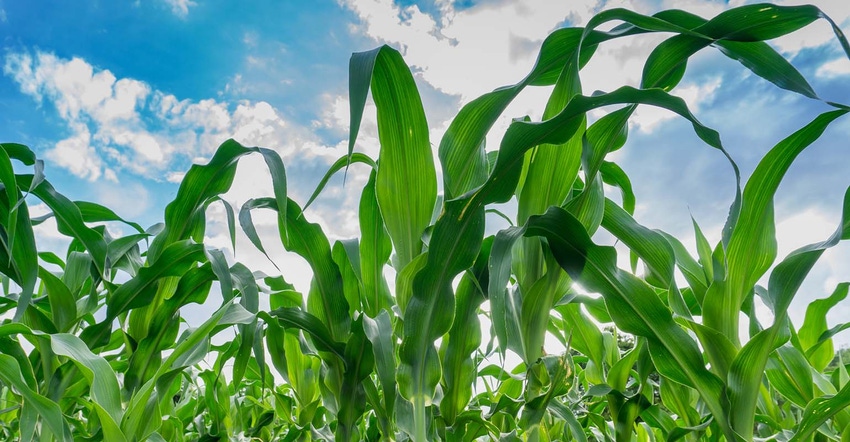
For the week ending July 14, analysts expected USDA to drop corn quality by a point and hold soybean quality steady. But the agency did neither of those things, moving each crop a point higher in its latest Crop Progress report, out Monday afternoon.
Corn quality went from 57% in good-to-excellent condition a week ago up to 58% this past week. Another 30% of the crop is rated fair (down a point from last week), with the remaining 12% rated poor or very poor (unchanged from last week). Among the top 18 production states, outliers Colorado (82%) and Tennessee (80%) are in the best shape so far.
Physiologically, 17% of the crop is silking. That’s up from 8% the prior week but far behind 2018’s pace of 59% and the five-year average of 42%.
“For corn, big gains in Illinois and Missouri offset losses in parts of the western Corn Belt, helping overall yield potential gain nearly a half of a bushel per acre,” according to Farm Futures senior grain market analyst Bryce Knorr. “Our models increased yields to 168.9 to 171.1 bpa, with the average of the two right at 170.”
The improvement in corn was mirrored by overall reports on Feedback From The Field, Knorr adds.
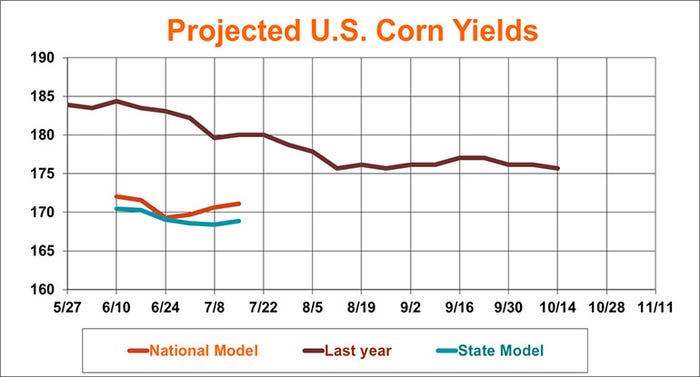
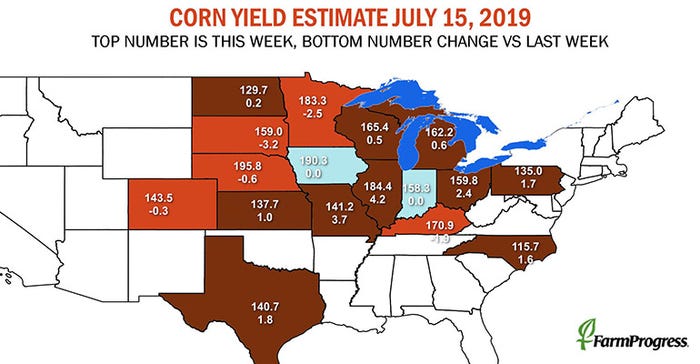
“But farmer assessments of soybeans were lower, while USDA’s crop raters judged the crop better, at least on a nationwide basis,” he says.
Soybean crop quality also ticked a point higher last week, with 54% in good-to-excellent condition. Another 34% of the crop is rated fair (down a point from last week), with the remaining 12% rated poor or very poor (unchanged from last week).
“The yield average came in at 50 bpa, up about a quarter of a bushel, in a range from 49.5 to 50.4 bpa,” Knorr says. “However, while the nationwide rating improved, our state-by-state analysis showed only steady conditions., with the upper Midwest seeing mostly weaker ratings.”
Five percent of the crop still hasn’t emerged by mid-July. And 22% of the crop is now blooming – up from 10% a week ago but far behind 2018’s pace of 62% and the five-year average of 49%.
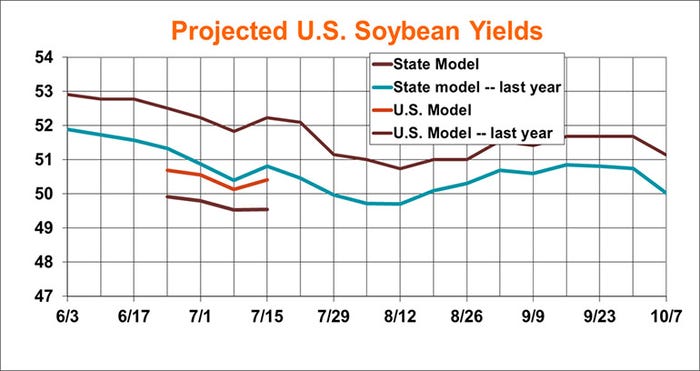
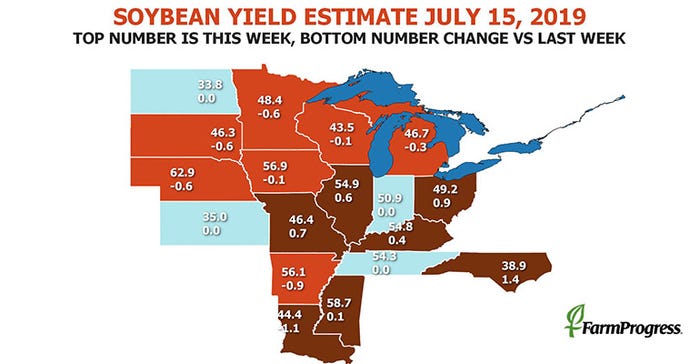
Winter wheat harvest is progressing, meantime, just not quite as fast as analysts had anticipated with progress of 57% versus an expected pace of 62%. That’s up from last week’s tally of 47% but moderately behind 2018’s pace of 72% and the five-year average of 71%.
For spring wheat, 78% of the crop is now headed, up from 56% a week ago but moderately behind 2018’s pace of 91% and the five-year average of 87%. Crop condition moved from 78% in good-to-excellent condition a week ago down to 76%.
“Ratings models also came to different conclusions for spring wheat,” Knorr says. “While USDA’s national rating for the crop slipped a little, the state-by-state model improved. The average yield from our model rose to 51.9 bpa, in a range from 51.1 to 51.9 bpa, above USDA’s estimate last week.”
Most states had five to six days suitable for fieldwork last week, according to USDA.
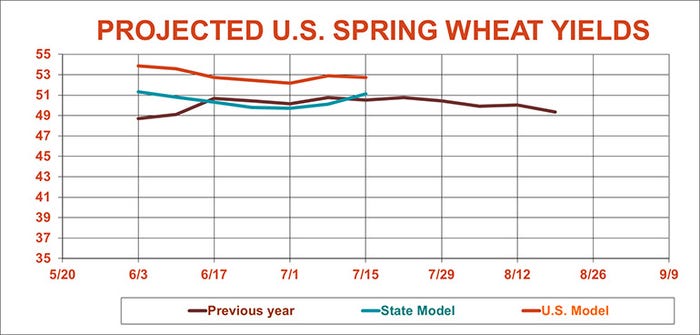
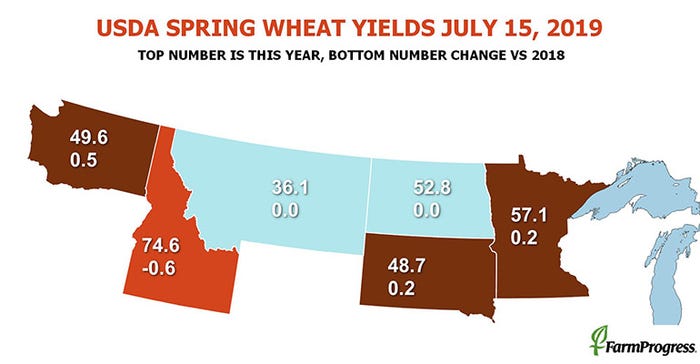
About the Author(s)
You May Also Like






